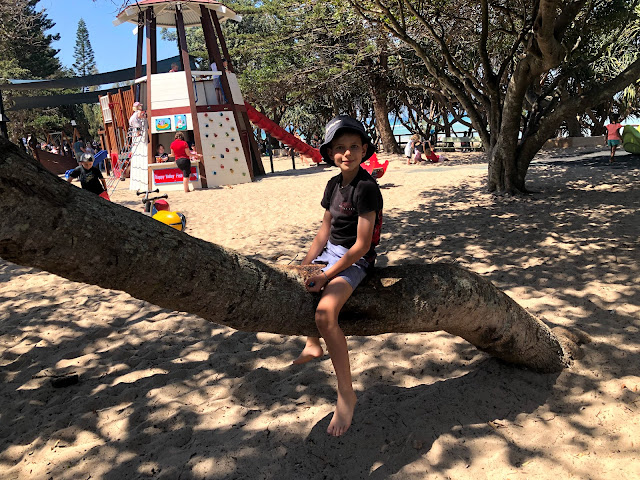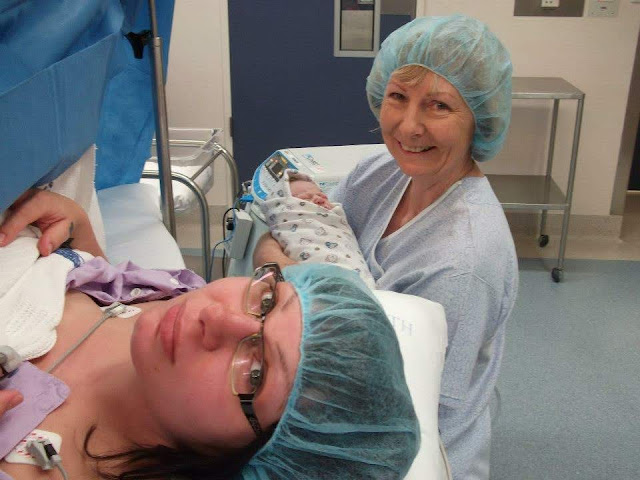White Privilege and Intergenerational Trauma
White privilege
is one of the major contributing factors of intergenerational trauma for Indigenous Australians. The story of
Laurie Stewart and his family will be the focus in illustrating this. Firstly, a definition of white privilege is provided. Next, the poor physical health outcomes
associated with intergenerational trauma are analysed. Following this, the mental health impacts will be
visited. Statistics denoting over-representation of Indigenous children in the child protection system demonstrate white
privilege and systemic racism are an
ongoing problem. Finally, the importance of Indigenous
Australians in government positions is emphasised. It will be argued that white
privilege is a significant component
of Indigenous intergenerational trauma. This white privilege, and the inequality it engenders,
must be addressed as part of the trauma healing process.
To recognise and remedy the issue of white privilege, it must first be understood what this term means.
While often used interchangeably with the term racism, white privilege is deeper
and wider-reaching than racial slurs
and derogatory remarks. White privilege is subconscious and oftentimes unintentional, resulting from a
lack of education on the subject, rather than from a place of deliberate malice. Peggy McIntosh (1990)
describes white privilege as an invisible and weightless knapsack of unearned assets and code books which make the white
person’s journey through life easier. To demonstrate the pervasive and
innocuous nature of white privilege in society, McIntosh lists twenty-six items
contained in this knapsack which she acknowledges she took for granted
daily—things like, ‘flesh’ coloured bandages and makeup, white racial representation in schooling
curriculums, the music industry, the media, and children’s toys, dolls, and books. Significantly white
privilege systematically disadvantages non-white peoples in areas such
as access to education, unemployment, socioeconomics,
and poverty. A 2014 study on the scope of these issues for First Nations people
of Australia, New Zealand, and Canada
revealed that the Indigenous populations of these countries were at almost the same level of disadvantage
in 2006 as they were in 1981, regarding employment and income domains; they were further disadvantaged in the education
domain (Mitrou et al. 2014).
This can be attributed to a toxic combination of systemic racism, low
socioeconomic neighbourhoods, and white privilege. More work is required to
close these gaps.
White privilege
has formed part of governmental efforts to control Indigenous populations and
forcefully remove their children. From the late nineteenth century, up until
the 1970s, the Australian government exercised control over all Aboriginal
people and assumed legal guardianship of their children, most of whom were
placed in Christian orphanages and group homes, or with European families. This
was purported to be in the best interests of the children and necessary for
their assimilation into Western society, yet almost all these children were
abused, mistreated, and ostracised. They became the infamous ‘Stolen Generations’
and their collective trauma irrevocably altered their psyches (Van Krieken
1999). While this cultural genocide does not occur to the extent it did at the time of Australian
colonisation, Toowoomba man, Laurie Stewart admits he still does not know why he and his siblings were
taken from their parents. Stewart was just two years old when he and his three
siblings were placed in foster care (Hardwick
2021). Removal of children from their family of origin has a profound negative
impact neurologically,
developmentally, and physiologically (Van Krieken 1999) and Stewart’s family
were no exception to this—it is demonstrated in that he is the sole surviving
sibling of four. Stewart attributes the trauma from their family’s childhood, at least in part, to the deaths
of his siblings, all of whom died in their mid-forties.
The children’s father passed away when Stewart was twelve and his mother, when
he was twenty-one. Stewart’s father’s sister, who was the children’s Nan through the Aboriginal kinship system,
tracked the four siblings down in a foster home on the Gold Coast. She took them all home to live with
her in Cunnamulla (Hardwick 2021). Ideally, children should be with their
family and reasonable attempts were evidently not made to find a suitable biological
carer before Stewart and his siblings were taken from their parents. Clearly, the Stewart children’s Nan was both
capable and willing to accept guardianship of her grandchildren; her love and
dedication to her kin were the driving forces behind her quest to bring them
home. One must ask why
the children were not placed in her care in the first instance and, in doing
so, consider whether white privilege and racial prejudice were not at
play.
Intergenerational
trauma has a considerable destructive impact on developmental outcomes. When
one thinks what trauma means, it is most associated with the mind—flashbacks,
nightmares, anxiety, and mental health issues such as post-traumatic stress
disorder (PTSD). A now widely recognised impact is the physiological effects. Prolonged
periods of stress produce psychosomatic symptoms in the body and increase the
likelihood of developing or inheriting chronic diseases and illnesses. A study
investigating the intergenerational transmission of stress in humans concludes
it is transmitted to offspring, at the time of conception, via parental gametes
(Bowers & Yehuda 2015) thus altering the biological makeup of the child. To
not be predisposed to this genetic and multigenerational disadvantage is yet
another form of white privilege.
The mental effects of intergenerational trauma are pervasive and difficult to treat,
too often resulting in suicide. Stewart lost his sixteen- year-old daughter, Kyesha Stewart, to
suicide in 2020. He and his wife, Louise Stewart, say there were no warning signs (Hardwick 2020). The
noxious tendrils of intergenerational trauma can perhaps provide
an explanation for Stewart’s
daughter’s anguish where there is seemingly none. Dudgeon, Calma, and Holland (2017,
p. 1) note:
Although there is a degree of commonality between the
specific causes associated with the suicide of Indigenous
and non-Indigenous individuals, the burden and the accumulation of underlying
trauma, risk factors and specific
causes in the case of Indigenous individuals results in higher rates of
suicide.
Just as
intergenerational trauma has widespread negative repercussions, so too, must
its treatment and healing be multifaceted. Recovery is required on individual,
family, and cultural levels. Positive changes to entrenched racist attitudes
are vital, as is acknowledgement of historic wrongdoing and contemporary white
privilege in governmental departments (Dudgeon, Calma & Holland 2017). The
heightened suicide rate observed in the Indigenous population is intrinsically
linked to the generational trauma initially set in motion by the European
settlers during the colonisation of Australia.
White privilege
is entangled in the roots of the Australian child protection and foster care
systems. Recognising this and its contribution to sustained systemic racism is
the first step in mitigating the trauma still rippling through Indigenous
Australians today. For this reason, Indigenous child protection workers and
foster carers are crucial. Stewart has been working in the child protection
system and the foster care system in Queensland for the past twenty years.
Currently he is Mercy Community’s Aboriginal and Torres Strait Islander Regional Practice Lead. There are approximately
160 Aboriginal children in Mercy’s foster
care system and a major shortage of Indigenous carers. While non- Indigenous carers do complete mandatory
cultural awareness training, this is minimal. The paramount focus of Stewart,
and others in similar positions, is now on keeping children with their
biological families whenever it is safe to do so. When foster care is unavoidable,
this focus switches to ensuring foster homes are culturally appropriate and
that time in care does not extend longer than is reasonably necessary to protect
the children. On this subject, Stewart (in Hardwick 2021, para. 20) says, ‘In
the past it was easier to remove the
children from their home than to deal with the problem...’ History and current statistics now show that this has a greater
detrimental impact on the children, parents,
and the generations who follow. To break the cycle, all Australians must begin
to recognise the mistakes of the past, acknowledge
that white privilege is still very much present in society today, and work to
actively correct this through
educational and activist means.
The scope of
white privilege reaches beyond racial slurs and hate-speech. It is many unearned privileges and conveniences afforded
to one because of their skin colour
and their lineage. White privilege and its accompanying stressors have a
profound adverse effect on the mental health of Indigenous peoples. This has resulted in a
psychological phenomenon known as intergenerational trauma, which not only
leads to genetic mental health issues, but
is also associated with physical ailments and shorter life expectancy. One of
the main stressors of past generations was the forced removal of Aboriginal children
from their families. Stress exposure produces
psychosomatic symptoms and simultaneously exacerbates, and sometimes activates
chronic disease genes. Further,
intergenerational trauma is linked to depression and suicide. White privilege has largely contributed to,
if not created, the serious health issue of intergenerational trauma frequently seen in Aboriginal
individuals and families. To end the cycle, white privilege
must be consciously recognised and educationally corrected. It must be
acknowledged that the best people to treat and assist families impacted by intergenerational trauma are those with
similar backgrounds or of Indigenous descent.
White privilege was and is a large portion of the problem;
it cannot be the sole solution.
References:
Dudgeon, P Calma, T & Holland,
C 2017, ‘The context and causes of the suicide of Indigenous people in
Australia’, Journal of Indigenous Wellbeing, vol. 2, no. 2, pp. 5–15,
viewed 21 October 2021, <http://manage.journalindigenouswellbeing.com/index.php/joiw/article/view/82>.
Hardwick, P
2020, ‘'There were no signs': shock after rising singer's death’, The Chronicle, 30 May, viewed 26 August 2021, <https://www.couriermail.com.au/news/there-were-no-signs-shock-after-rising-singers-death/news-story/4ffe7016a2e2284d4023a0db87d97af4>.
Hardwick, P
2021, ‘Laurie fosters care to others after being taken from own parents’, The Chronicle, 12 June, viewed 26 August 2021, <https://www.thechronicle.com.au/news/toowoomba/laurie-fosters-care-to-others-after-being-taken-from-own-parents/news- story/c30ff54a388c9e5878b06f7311b06945>.
McIntosh, P
1990, ‘White privilege: unpacking the invisible knapsack’, Independent School, vol. 49, no. 2, pp. 31–35, viewed 23 August 2021,
<http://web.b.ebscohost.com.ezproxy.usq.edu.au/ehost/detail/detail?vid=1&sid=a4664e8b- 1182-41c4-99ac-7382ec63206e%40pdc-v-sessmgr03&bdata=JnNpdGU9ZWhvc3QtbGl2ZQ%3d%3d#AN=9604164115&db=ehh.
Metrou, F, Cooke, M, Lawrence, D, Povah, D, Mobilia, E, Guimond, E & Zubrick, SR 2014, ‘Gaps in Indigenous disadvantage not closing: a census cohort study of social determinants of health in Australia, Canada, and New Zealand from 1981–2006’, BMC Public Health, vol. 14, no. 201, viewed 13 September 2021,<https://bmcpublichealth.biomedcentral.com/articles/10.1186/1471-2458-14-201>.
Van Krieken, R 1999, ‘The `Stolen Generations' and cultural genocide: the forced removal of Australian Indigenous children from their families and its implications for the sociology of childhood’, Childhood, vol. 6, no. 3, pp. 297–311, viewed 21 October 2021, <https://journals.sagepub.com/doi/10.1177/0907568299006003002>.
google.com, pub-5896944412523933, DIRECT, f08c47fec0942fa0









Comments
Post a Comment